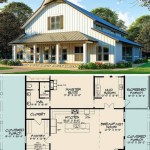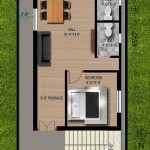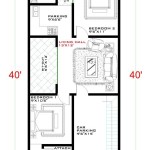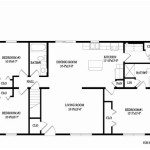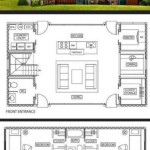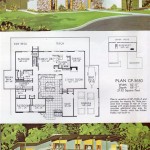What Is a Floor Plan in Building Construction Terms and Definitions?
In the realm of building construction, a floor plan stands as a fundamental document, a vital visual representation of a building's layout. It's a scaled diagram, essentially a bird's-eye view of a space as if a horizontal cut has been made through the building, typically about four feet above floor level. This cut reveals the arrangement of rooms, walls, doors, windows, and other essential features within a structure. More than just a simple drawing, a floor plan serves as a crucial tool for architects, engineers, contractors, and homeowners, facilitating communication, planning, and execution throughout the construction process.
The primary purpose of a floor plan is to communicate the spatial relationships within a building. It details the size and shape of each room, the placement of circulation routes like hallways, and the location of key fixtures such as plumbing and electrical outlets. This detailed layout allows stakeholders to understand the overall design, assess the functionality of the space, and identify potential problems or areas for improvement before construction even begins.
Floor plans are not static documents. They evolve throughout the design and construction phases, reflecting changes based on client feedback, site conditions, and regulatory requirements. Therefore, understanding the different types of floor plans and their specific uses is essential for anyone involved in the building construction industry.
Key Point 1: Essential Components and Information Depicted in a Floor Plan
A comprehensive floor plan conveys a wealth of information using a standardized set of symbols and conventions. Understanding these elements is crucial for interpreting and utilizing floor plans effectively. Some of the most common components include:
- Walls: Represented by solid, thick lines, walls define the boundaries of rooms and structural elements of the building. The thickness of the lines often indicates the type of wall (e.g., load-bearing versus non-load-bearing).
- Doors: Shown as an arc indicating the swing direction and the door's width. The location and dimensions of doors are vital for understanding circulation patterns and accessibility.
- Windows: Depicted as two or three parallel lines, with the space between indicating the window’s glazing. The size, type, and placement of windows are critical for daylighting and ventilation strategies.
- Rooms: Clearly delineated by walls, with labels indicating their intended use (e.g., bedroom, kitchen, living room). Room dimensions are typically included to provide accurate spatial information.
- Fixtures: Represented by standardized symbols, fixtures include items such as toilets, sinks, bathtubs, showers, kitchen appliances (e.g., refrigerators, ovens, dishwashers), and even furniture layouts. These elements offer insight into the functionality and ergonomics of the space.
- Stairs: Illustrated with a series of steps and an arrow indicating the direction of ascent. Stair dimensions, including riser height and tread depth, are critical for safety and code compliance.
- Dimensions: Accurately labeled throughout the plan, dimensions provide precise measurements of walls, rooms, doors, and windows. Dimensions are essential for accurate construction and material estimation.
- Plumbing and Electrical Symbols: Indicate the location of plumbing fixtures (e.g., water heaters, drains) and electrical outlets, switches, and lighting fixtures. These symbols are crucial for coordinating mechanical and electrical systems.
- Notes and Annotations: Provide additional information, such as materials used, construction details, or specific instructions for the contractor.
- Compass Rose: Indicates the orientation of the building in relation to the cardinal directions (North, South, East, West). This is crucial for understanding solar orientation and its impact on energy efficiency and daylighting.
- Scale: The scale of the drawing, typically expressed as a ratio (e.g., 1/4" = 1'0"), indicates the relationship between the dimensions on the plan and the actual dimensions of the building.
Without these elements, a floor plan loses its clarity and utility. Precise and accurate representation of these components is fundamental to its success.
Key Point 2: Types of Floor Plans and Their Specific Uses
Depending on the project phase and the intended audience, different types of floor plans are used. Understanding the distinctions between these types is critical for effective communication and collaboration.
- Concept Plans: These preliminary plans are used during the initial design phase to explore different spatial layouts and design options. They are often less detailed and more schematic than subsequent plans. Concept plans help clients visualize the potential of the space and provide feedback on the overall design direction.
- Preliminary Plans: Developed after the concept phase, preliminary plans provide a more refined and detailed layout. They include more specific information about room sizes, fixture locations, and circulation patterns. Preliminary plans are used for initial cost estimates and regulatory reviews.
- Construction Documents (CDs): These highly detailed plans are used for building permit applications and actual construction. CDs include all the information necessary for the contractor to build the building accurately, including precise dimensions, material specifications, construction details, and notes. CDs are the legal and binding documents for the project.
- As-Built Plans: These plans are created after the construction is complete to reflect the actual built conditions. As-built plans document any changes made during construction and provide an accurate record of the final layout and systems of the building. They are important for future renovations, maintenance, and facility management.
- Reflected Ceiling Plans (RCPs): While not strictly floor plans, RCPs are often included in the same set of drawings. They depict the layout of the ceiling, including lighting fixtures, HVAC diffusers, and other ceiling-mounted elements. RCPs are essential for coordinating mechanical and electrical systems.
- Furniture Plans: These plans show the placement of furniture within the space. They are often used by interior designers to plan the layout and flow of the space and to ensure that the furniture fits comfortably and functionally.
- Presentation Plans: These plans are often created for marketing or sales purposes. They are designed to be visually appealing and may include renderings or 3D models to showcase the finished product. Presentation plans are often used to attract potential buyers or investors.
Choosing the appropriate type of floor plan for a specific purpose ensures clarity and facilitates effective communication among all stakeholders involved in the project.
Key Point 3: The Role of Floor Plans in Building Construction Process
Floor plans play a pivotal role in every stage of the building construction process, from initial design to final completion. Their influence extends beyond mere visual representation, impacting efficiency, cost-effectiveness, and overall project success.
- Design and Planning: Floor plans are the foundation of the entire design process. They allow architects and designers to explore different spatial layouts, experiment with design concepts, and refine the design based on client feedback and site constraints. They're used to optimize space utilization, circulation patterns, and the overall functionality of the building.
- Communication and Collaboration: Floor plans serve as a common language for all stakeholders involved in the project, including architects, engineers, contractors, subcontractors, and homeowners. They facilitate clear communication, ensure that everyone is on the same page, and minimize misunderstandings or errors.
- Construction and Execution: Construction documents (CDs), which include detailed floor plans, provide the contractor with the necessary information to build the building accurately. The plans guide the construction process, ensuring that the building is built according to the design specifications and building codes. Dimensions, material specifications, and construction details are all clearly outlined in the plans.
- Cost Estimation and Budgeting: Floor plans are used to estimate the quantity of materials needed for the project, such as lumber, concrete, drywall, flooring, and fixtures. Accurate material estimates are essential for creating a realistic budget and controlling project costs.
- Permitting and Regulatory Compliance: Floor plans are required for building permit applications. They are reviewed by local authorities to ensure that the building design complies with all applicable building codes, zoning regulations, and safety standards.
- Marketing and Sales: Presentation plans, which include visually appealing floor plans, are used to market and sell properties. They allow potential buyers to visualize the layout and features of the building and to assess its suitability for their needs.
- Facility Management and Maintenance: As-built plans provide an accurate record of the final built conditions, including the location of all systems and fixtures. This information is invaluable for future renovations, maintenance, and facility management.
In conclusion, floor plans are central to successful construction projects. Their comprehensive depiction of space, combined with their role in facilitating communication and decision-making, makes them an indispensable tool for all project stakeholders.

Floor Plan Wikipedia

How To Read A Floor Plan With Dimensions Houseplans Blog Com

15 Key Floor Plan Symbols 74 Architectural Abbreviations Foyr

How To Properly Read Floor Plans And What Details Look For

How To Read A Floor Plan With Dimensions Houseplans Blog Com

Floor Plan Symbols And Meanings Edrawmax

15 Key Floor Plan Symbols 74 Architectural Abbreviations Foyr

10 Types Of Floor Plan And Blueprint Symbols

10 Types Of Floor Plan And Blueprint Symbols

All Floor Plan Symbols And Abbreviations Roomsketcher
Related Posts



